NEWS / Current presentation
We are open on 23/11 for individual visitors. Book your tickets here
CURRENT PRESENTATION!
VIEWING DEPOT EXH#03 – Year of the Dragon
EXH#03 is the third major presentation, highlighting recent acquisitions and seminal works from the collection, all in the unique setting of a viewing depot. Drawing inspiration from the Chinese calendar and astrology, this 2024 exhibition aptly finds its thematic core in the zodiac sign of the dragon, symbolising creativity, curiosity, confidence and generosity. Associative in nature, EXH#03 brings together large-scale works that fuse aesthetic innovation with emotional directness and intensity. One of the focal points in the exhibition, spanning the full three floors of the Vanhaerents Art Collection, is Ai Weiwei’s haunting installation Life Vest Snake (2019), which seamlessly intertwines traditional Eastern iconography with poignant reflections on the contemporary refugee crisis.
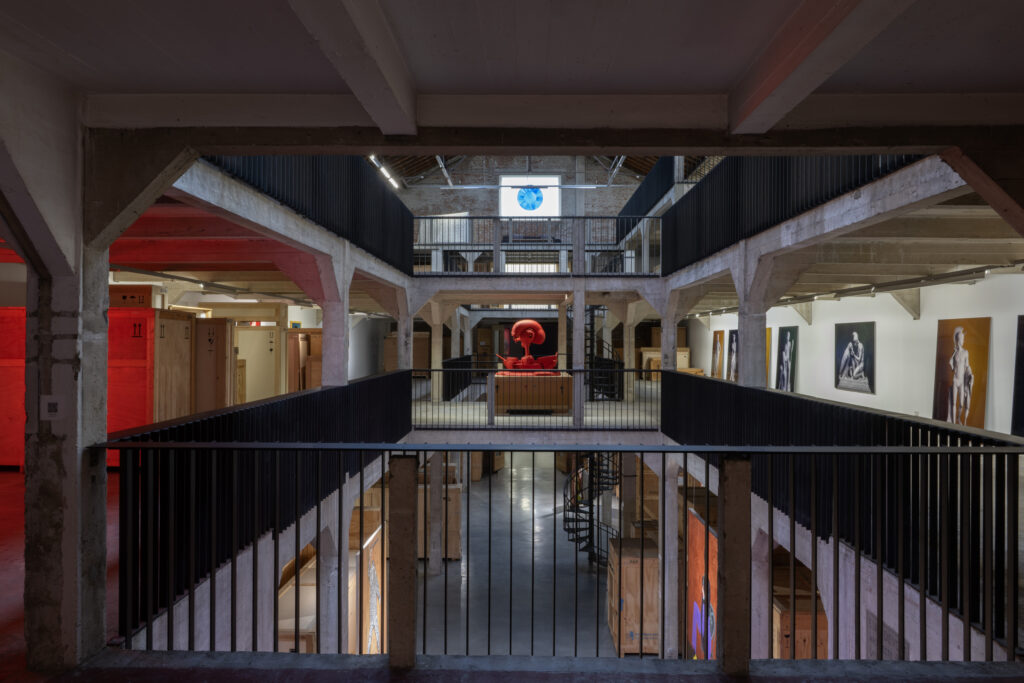

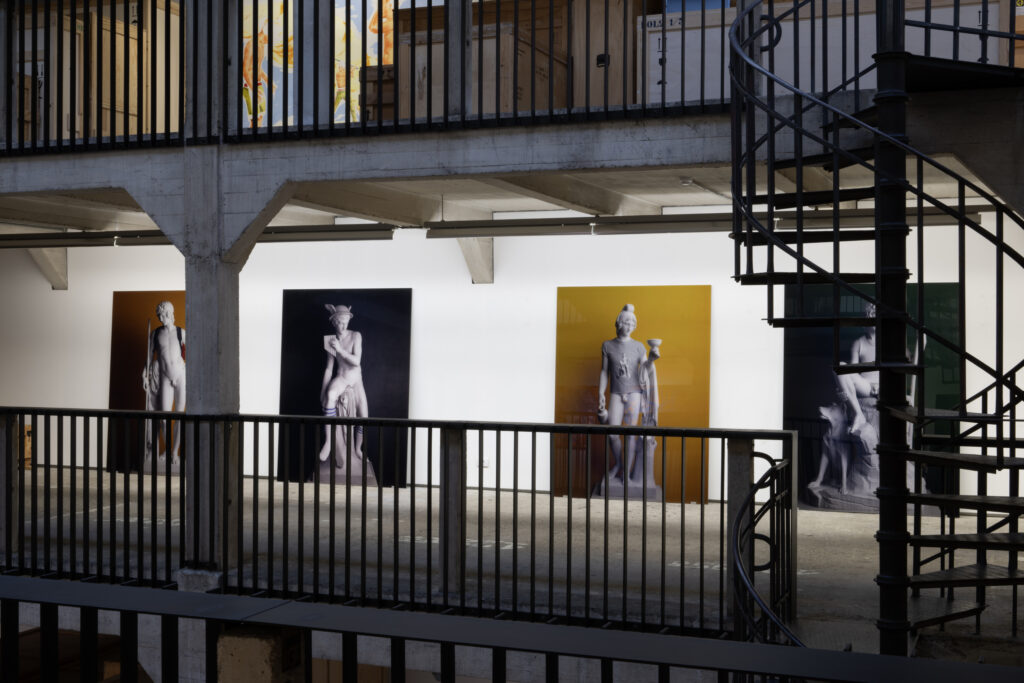
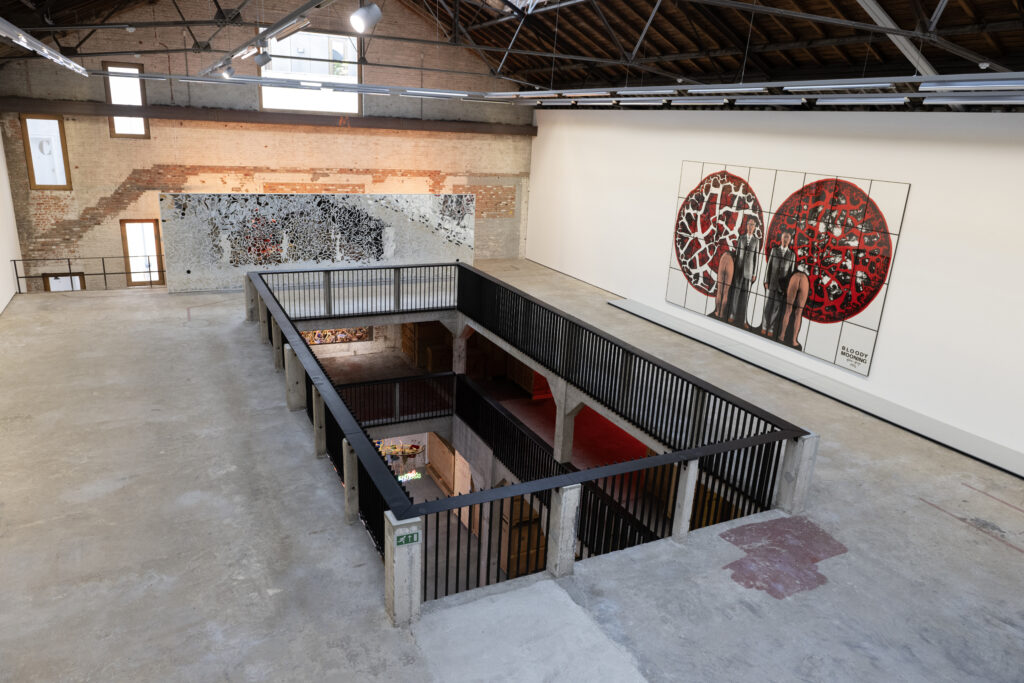
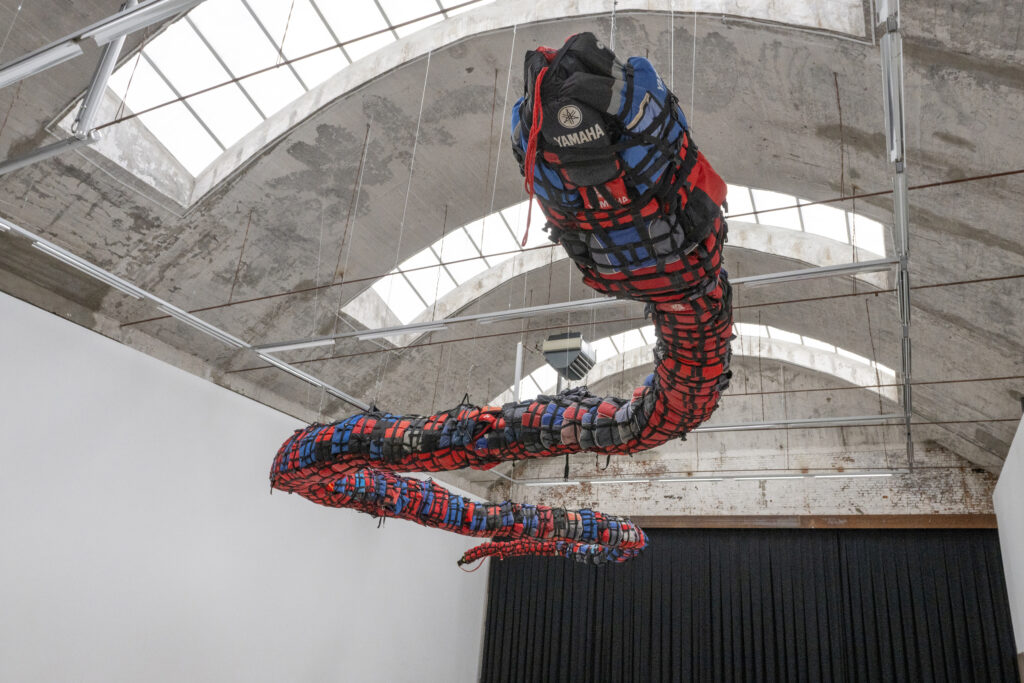
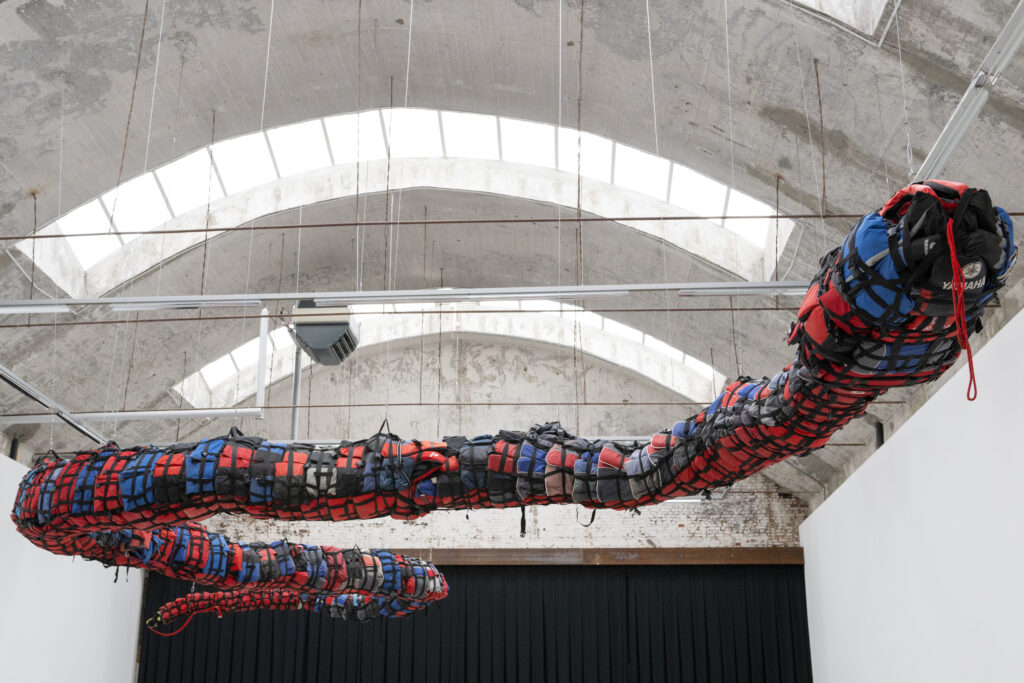
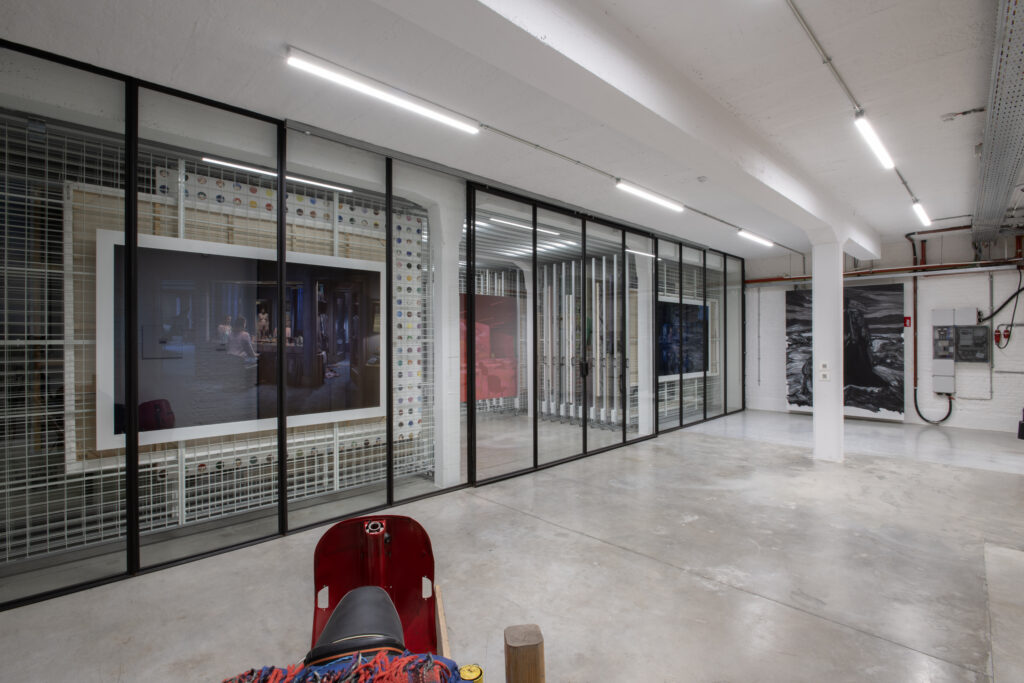
What are the traits of a Dragon?
According to the Chinese zodiac, people born in the Year of the Dragon are charismatic, intelligent, confident, powerful and they are naturally lucky and gifted. They approach every task with a commitment to excellence, setting high standards for themselves in all endeavors.
Artist Ai Weiwei, named the most powerful figure in the art world by Art Review magazine in 2011, showcases his profound activism through a striking installation from 2016. His monumental 22-meter-long snake, suspended from the ceiling, was crafted from 140 life jackets worn by refugees who navigated the perilous waters of the Mediterranean Sea to reach the Greek island of Lesbos. Witnessing a vast mound of discarded life jackets on the island’s shores, resembling the sloughed skin of a serpent, Ai Weiwei transformed these life vests into poignant installations, symbolizing solidarity with those seeking refuge.
A tireless advocate, Ai Weiwei has consistently challenged China’s political establishment, earning him the government’s scrutiny and condemnation. His unwavering activism led to his detention by Chinese authorities for nearly three months in 2011. Despite facing adversity, Ai Weiwei continues to courageously use his art to amplify the voices of the marginalized.
The artworks featured in the exhibition Viewing Depot #3 – Year of the Dragon delve into themes of oppression, the deprivation of freedom, and the erosion of individuality. Each artist brings a unique perspective to these subjects.
Stephan Balleux (b. 1974) conveys feelings of alienation and distortion of the human form in his piece The Guardian, 2007, rendered in stark black and white grisaille.
Gregory Crewdson (b. 1962) explores the isolating nature of everyday life in American suburbs through his series Beneath the Roses, using exposure and composition to evoke a sense of detachment.
Alvaro Barrington (b. 1983) employs jute material as a symbol of undervalued labor and marginal trade, eschewing canvas in his work to highlight societal inequalities.
Jonathan Meese (b. 1970) is recognized for his provocative and enigmatic statements, challenging viewers with controversial themes.
Zakaria Ramhani (b. 1983) confronts religious traditions and condemns political violence through his thought-provoking pieces.
Jin Meyerson (b. 1972) delves into the themes of natural disasters, human migration, and the transformation of cities during industrialization, offering a poignant commentary on societal evolution.
Ugo Rondinone (b. 1964) invites viewers to engage in introspective meditation and melancholy through his understated yet emotive works.
Aaron-Viktor Peeters (b. 1994) references the creation of a mountain by Italian immigrants as a byproduct of the mining industry in Genk, Belgium, while also exploring themes of migration and mobility.
Gillian Wearing (b. 1963) utilizes masks as a means of exploring identity, revealing layers of persona behind each facade.
Eddy Kamuanga (b. 1991) addresses the exploitation of his people and the plundering of Congo’s resources, shedding light on systemic injustices.
Gilbert and George (b. 1943 and 1942) provocatively present their own bodies in Bloody Mooning, amidst a backdrop of bodily fluids, challenging societal norms and reflecting on the world’s self-destructive tendencies.
